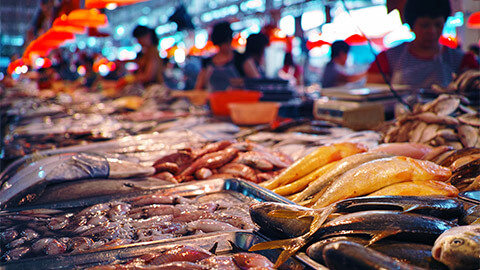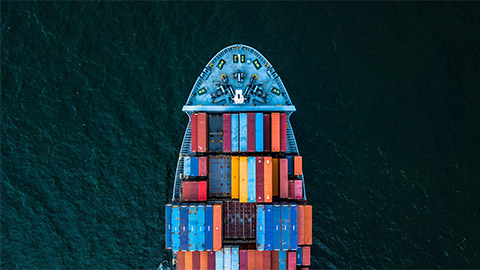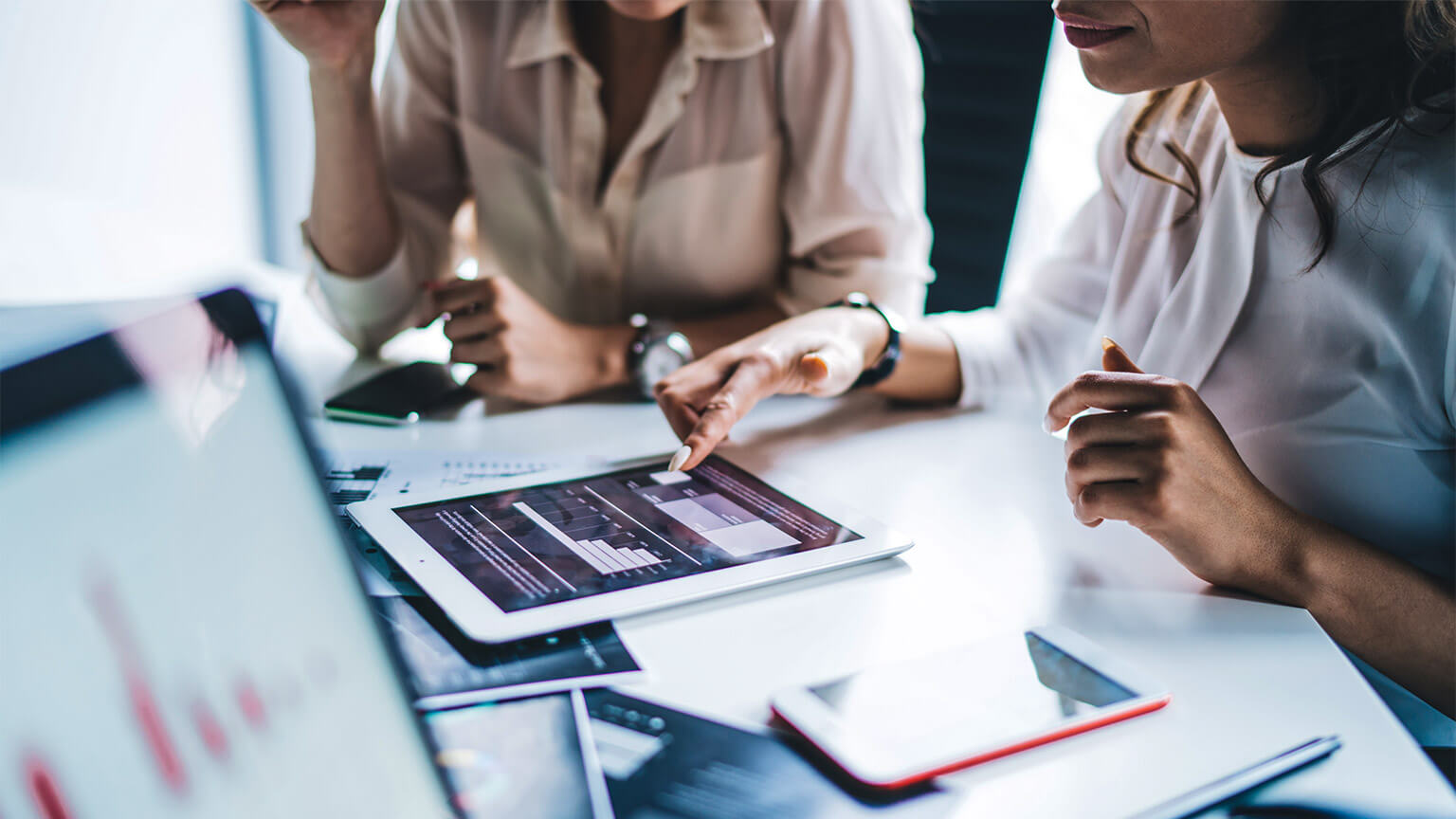In essence, economics has two (2) major dimensions; microeconomics and macroeconomics. Microeconomics examines how individual units, whether they be consumers or firms, decide how to allocate resources and whether those decisions are desirable. Macroeconomics studies the economy as a whole; it looks at the aggregate outcomes of all the decisions that consumers, firms, and the government make in an economy. Microeconomics is about how consumers and firms allocate resources at a local market level. Macroeconomics is about the aggregate variables involving many transactions at a national level —for example, the overall levels of output, consumption, employment, and prices—and how they move over time and flow through the economy. In terms of prices, microeconomics focuses on, for example, the price of a specific product for sale, whereas macroeconomics focuses on the exchange rate or the interest rate - sometimes referred to as the price of money.
Welcome to Topic 1: What is economics? In this topic, you will learn about:
- What is Economics?
- Scarcity of resources
- Markets
- Supply and demand
- Microeconomics and Macroeconomics.
These relate to the Subject Learning Outcomes:
- Understand the microeconomic models to consider fundamental economic choices for households and firms.
- Interpret economic models, diagrams and tables to describe the economic situations.
- Explain how government policy influences microeconomic choices and macroeconomic outcomes.
- Analyse the economy as a whole using macroeconomic models.
Welcome to your pre-seminar learning tasks for this week. Please ensure you complete these prior to attending your scheduled seminar with your lecturer.
Click on each of the following headings to read more about what is required for each of your pre-seminar learning tasks.
- Read Chapter 1 of the prescribed text – Mankiw, NG 2016, Principles of microeconomics, 8th edn, Cengage Learning Custom Publishing.
- Take note of the particular concepts and principles of opportunity cost, productivity and standard of living, rational people and incentive assumptions, and market failure.
- Read the article in the prescribed text Chapter 2, p.33 - Why you should study economics by Robert D, McTeer, Jr, 2003, Wall Street Journal.
Part one: watch the following videos
Task: Identify a list of things you have forgone recently as opportunity costs to other alternatives.
Part two: watch the following video
'What is economic value and who creates it?'
Record your responses in your reflective journal. You can access the reflective journal by clicking on ‘Journal’ in the navigation bar for this subject.
Read the following article: Backhouse, RE & Medema, S 2009, ‘Retrospectives: On the definition of economics’, Journal of Economic Perspectives 23(1):221-233.
Watch the video 'how the economic machine works' by Ray Dalio.
Task:
After watching the video, identify in your reflective journal the three (3) concepts or principles that you had not been aware of previously? What did you learn from this video?
Read the case study, ‘Adam Smith would have loved Uber’ in Chapter 1, p. 11 of the prescribed text – Mankiw, NG 2016, Principles of microeconomics, 8th edn., Cengage Learning Custom.
There is a discussion forum activity for this topic, which will enhance your knowledge and give you the opportunity to interact with your peers. You can access the activity by clicking on the following link. You can also navigate to the forum by clicking on "ECO100 Subject Forum" in the navigation bar for this subject.
- Topic 1: Forum Activity 1 - Introduce yourself
Read the following content.

Economics for business is to develop a knowledge base of microeconomics factors and theories, the macroeconomic factors and theories and how they affect the local and global business environments concurrently. To be successful in the business environment, including in a Not For Profit (NFP) or government organisation, understanding these factors and theories will support better decision-making, business planning, and operational management (Greenlaw & Shapiro 2011).
Studying economics will develop an understanding of many key and often intertwined theories. Learning how the microeconomic factors operate together locally and how macroeconomic factors behave at a national and international economy level, you can better understand the business environment.
Scarcity of resources
Homeless people are a stark reminder that scarcity of resources is an ongoing issue, which has real implications for society and the standard of living in each country. To understand how scarcity is a problem, consider the following: Does everyone have enough food to eat? Does everyone have a safe, protected place to live? In every country in the world, there are hungry and homeless people. For example, the following figure illustrates the scarcity of a few of the many critical goods and services.

Homeless people are a stark reminder that scarcity of resources is real.
We must delve into the concept of scarcity a little deeper because it is crucial to understanding economics. Scarcity is linked to supply and demand. These factors combine to form markets. In some cases, scarcity drives either demand or price or both. Scarcity is present in microeconomics and is most readily seen and understood at microeconomic-market levels. However, scarcity certainly exists on a global macroeconomic scale.
Markets
The economic definition of a market, the one that you will use in your study of microeconomics, is the means through which buyers and sellers interact, and transactions take place. So, it can be a physical or virtual space or an institution. Clearly, there must be both buyers and sellers for any market to function, but usually, it is much more than that. There must also be dealers who are ready to ‘make a market’.
How prices move and supply changes at a local level has a direct impact on consumers.
How interest rates availability of capital including credit affects business investment. Government macroeconomic policies on fiscal policy and monetary policy affect global trade (Greenlaw & Shapiro 2011).
Supply and demand
The theory of supply and demand in a market economy explains the relationship between the price of a good or service and the quantity sellers make available to the market (or supply) and the quantity buyers purchase (or demand).
Trade-offs and opportunity cost
Economic decisions involve trade-offs between one product and another or using scarce resources in one way or another. This can be both a small-scale and large-scale balancing of options to pursue efficiency from scarce resources. When we make an economic decision, the considered alternative option that we have forgone is known as the ‘opportunity cost’. For example, in many cases, the opportunity cost is that of your time doing one thing over another or your money spent on one thing or another. More broadly, in economic terms, we seek to value the trade-off. For example, if you invest in stocks at the expense of bonds, the interest that bonds earn would be your opportunity cost of investing in stocks.
As different countries each take a different perspective to their economy; we must first understand how the economic theory works before we seek to understand the various interventions from any given government designed to influence outcomes. Economic choices affect production and influence society’s economic activities. To understand how the opportunity costs are used to optimise output, production possibility graphs are used (Albert 2020).
Production possibility graphs
One of the most critical foundation concepts and charts in economics is the production possibility graph. It is a model that demonstrates alternative combinations of output that an economy can produce. The model is based on the concept of opportunity cost, trade-offs and scarcity. When drafting the model, it is assumed that:
- the economy produces only two (2) goods
- there are no changes in the factors of production and the technology level
- and capital intensity remains constant.
Here is an example of this core economic concept:
A local bakery can make either pizza or bread using its single oven on a given day and can only operate during the daytime. The bakery’s production possibilities per hour of operation have been outlined in the following table.
| Pizza | Loaves of bread |
|---|---|
| 0 | 30 |
| 2 | 27 |
| 4 | 20 |
| 6 | 10 |
| 7 | 0 |

When we chart the possibilities, we see that pizza production is inversely related to the baking of the bread; this is cause and effect as the amount of pizza possible declines as bread production increases. Suppose the resources are readily adaptable to the different products (equipment, skill of the labourers, availability, and cost of ingredients). In that case, the curve formed will be a straight line, although this is not common. For example, a car manufacturer may be able to add a new model car to the current production line using largely the same inputs (equipment and labour). However, the same car manufacturer could not readily adapt to shipbuilding without a range of new inputs (equipment and labour) being added. In our example, the bakery may increase the types of loaves baked, and the growth curve would be a straight line (Albert 2020).
The most typical scenario is when resources cannot quickly adapt to changes, creating a concave curve. This is attributed to the law of increasing opportunity costs, which states that as you increase production, the opportunity cost increases.
Changes in the factors of production such as capital, labour or technology, cause production possibilities curves to shift. In the example provided, if the bakery invests capital and gets another oven (capital intensity) or a more efficient model (technology), the curve will move to the right. In each change, with an increase of inputs such as labour and equipment, we recognise that there will be incremental thresholds. For example, a bakery can only fit so many ovens and so many staff to bake before the building is too small and significant new capital (buildings) must be considered and a new equation calculated for future growth-based equilibrium and cost structure.
As illustrated in the previous figure (Albert 2000), the production possibilities curve depicts the opportunity costs and trade-offs of how an economy utilises the factors of production. There can be an over-capitalisation. There can also be a failure following the investment of the law of diminishing returns. This means efficiencies have been maximised and starts to decline with greater costs as production revenge cannot exceed the increased investment as effectively. For example, having one or two pilots in a commercial aircraft may be most efficient; having five becomes inefficient. A garage repair workshop with two bays cannot accommodate 10 cars if the optimal equilibrium is five without triggering a decline in efficiency rate.
Microeconomics and Macroeconomics
Mankiw (2016) identifies that the discipline of economics is divided into two broad areas. Microeconomics and Macroeconomics. Microeconomics is the study of how households and firms make decisions and how they interact in specific markets. Macroeconomics is the study of economy-wide factors and dynamics.

A microeconomist might study the effects of fluctuating supply and prices at a local fish market, the impact of electricity on the automotive industry, or the effects of subsidised childcare on workers’ earnings. A macroeconomist might study the effects of borrowing by the Commonwealth (or national) government, the changes over time in the economy’s unemployment rate, Reserve Bank official interest rates or stimulus policies to promote improvement in a country’s living standards.

Microeconomics and macroeconomics impact each other like a ship sailing on the ocean, the weather (macro conditions) affects the performance of the particular ship (micro). The macroeconomic dynamics in the overall economy arise from the decisions of many individuals, it is impossible to understand macroeconomic conditions without considering the associated microeconomic decisions. Microeconomics may be regarded as within or underneath the macro layer of a total national or international macroeconomic perspective. For example, a macroeconomist might study the effect of a personal income tax rate cut on the overall production of goods and services. Mankiw (2016) illustrates that, to analyse this better, we must consider how the tax cut affects households’ decisions about how much to spend on goods and services. Despite the inherent link between microeconomics and macroeconomics, the two fields are distinct. Because they are fundamentally different (but not unrelated) perspectives and each addresses different questions, each field has its own set of models.
The following table depicts the different microeconomic and macroeconomic issues.
| Economics | |
|---|---|
| Microeconomic issues | Macroeconomic issues |
| How much will a consumer spend on food? | What will happen if taxes are raised? |
| How much leisure time will consumers enjoy? | How much income will a country save? |
| How much output will a firm produce? | What will the unemployment rate be? |
| How much research and development will a company undertake? | What is the appropriate exchange rate between currencies? |
The following video illustrates the differences between Microeconomics and Macroeconomics.
Analyse the following two figures on Microeconomics and Macroeconomics, which illustrate individual purchases and the whole of economy dynamics, which flow from individual purchases and whole economy factors.
Microeconomics
Microeconomics is the branch of economics that focuses on the actions of various agents (individuals) within the economy, like households, workers, and business firms, and considers their demand for products and services under various price and supply conditions in a market. The following figure shows key microeconomic concepts and how they link together in Business Study Notes. These concepts are expanded on in our further topics.
Macroeconomics
In ‘Introduction to Macroeconomics and its Concepts’ the following figure shows macroeconomic factors as they are often seen, as flows through the economy. In the figure, we can see Demand and Supply underpinning Gross National Product.
Knowledge check
Complete the following five (5) tasks. Click the arrows to navigate between the tasks.
Key Takeouts:
Congratulations, we made it to the end of the first topic! Some key takeouts from Topic 1:
- Microeconomics and macroeconomics are intertwined but distinct.
- Economics impacts many factors for a country and its people, including:
- wages
- prices
- unemployment
- standard of living.
- Understanding microeconomics and macroeconomics can inform better business decision-making, better career choices, and a greater understanding of governments policies as they affect the standard of living.
Welcome to your seminar for this topic. Your lecturer will start a video stream during your scheduled class time. You can access your scheduled class by clicking on ‘Live Sessions’ found within your navigation bar and locating the relevant day/class or by clicking on the following link and then clicking ‘Join’ to enter the class.
Click here to access your seminar.
The learning tasks are listed below. These will be completed during the seminar with your lecturer. Should you be unable to attend, you will be able to watch the recording, which can be found via the following link or by navigating to the class through ‘Live Sessions’ via your navigation bar.
Click here to access the recording. (Please note: this will be available shortly after the live session has ended.)

In-seminar learning tasks
The in-seminar learning tasks identified below will be completed during the scheduled seminar. Your lecturer will guide you through these tasks. Click on the following heading to read more about the requirements of your in-seminar learning tasks.
Facilitated discussions with lecturer based on the following two (2) components from within the pre-seminar learning tasks. Consider and come prepared to discuss the following:
- Your lecturer will facilitate a discussion based on the video ‘how the economic machine works’. This discussion will draw on the various responses and their conceptual linkage.
- Which has the greater impact on a student’s lifestyle – microeconomic or macroeconomics? Why?
- Is the price of food a greater impact on young people or the “price” of interest rates? Why?
- Facilitated discussion by the lecturer of seminal economist Adam Smith, and the “Invisible Hand” in economics concept and the subsequent influence of government policy levers on the economy.
- Is the invisible hand coined by Smith in 1776 (p. 10, Mankiw 2008) still at work in today's national economy?
- Which has a greater impact on Australia’s economy – the demand for an Uber at midnight on a Saturday or the price of coal? Why?
Welcome to your post-seminar learning tasks for this week. Please ensure you complete these after attending your scheduled seminar with your lecturer. Your lecturer will advise you if any of these are to be completed during your consultation session. Click on each of the following headings to read more about the requirements for each of your post-seminar learning tasks.
Prepare a list of key terms from this topic in your reflective journal.
Each week you will have a consultation session, which will be facilitated by your lecturer. You can join in and work with your peers on activities relating to this subject. These session times and activities will be communicated to you by your lecturer each week. Your lecturer will start a video stream during your scheduled class time. You can access your scheduled class by clicking on ‘Live Sessions’ found within your navigation bar and locating the relevant day/class or by clicking on the following link and then clicking 'Join' to enter the class.
Click here to access your consultation session.
Should you be unable to attend, you will be able to watch the recording, which can be found via the following link or by navigating to the class through ‘Live Sessions’ via your navigation bar.
Click here to access the recording. (Please note: this will be available shortly after the live session has ended.)

- Chapter 1 of Greenlaw, SA, Shapiro, D & Taylor, T 2017, Principles of macroeconomics 2nd edn., OpenStax.
- Chapter 1 of McConnell, CR, Brue, SL & Flynn, SM 2009, ‘Economics: Principles, problems and policies,' 18th edn., McGraw-Hill Irwin.
- Tenner, E n.d., The Paradox of efficiency/Edward Tenner, streaming video.
References
- Adams, S, 2021, Billionaire space club' Dilbert Comic Strip, https://dilbert.com/
- The Albert Team 2020, 10 must-know basic concepts for AP economics, streaming video, https://www.albert.io/blog/10-must-know-basic-economic-concepts-for-ap-economics
- Backhouse, RE & Medema S, 2009, ‘On the definition of economics’, Journal of Economic Perspectives, 23(1):221-233
- Dalio, R 2013, How the economic machine works by Ray Dalio, streaming video, https://www.youtube.com/watch?v=PHe0bXAIuk0&list=PLykIL_1_MFWmS82OuK8CBCow_QHUJuBes
- Daniels, R 2018, What is microeconomics, Business Study Notes, https://www.businessstudynotes.com/wp-content/uploads/2018/11/What-is-Mircoeconomics.jpg
- EduRev n.d., Introduction to macroeconomics and its concepts commerce notes, EduRev, https://edurev.in/studytube/Introduction-to-Macroeconomics-and-its-Concepts/a114e6d0-9c81-45b7-a625-0a92c538ede4_t
- Greenlaw, SA & Shapiro, D,2011, Principles of Macroeconomics, OpenStax,https://openstax.org/details/books/principles-macroeconomics-2e
- Mankiw, NG 2016, Principles of microeconomics, 8th edn., Cengage Learning Custom Publishing.
- Mazzucato, M 2019, What is economic value and who creates it?, TED Summit 2019, streaming video, https://youtu.be/PHe0bXAIuk0
